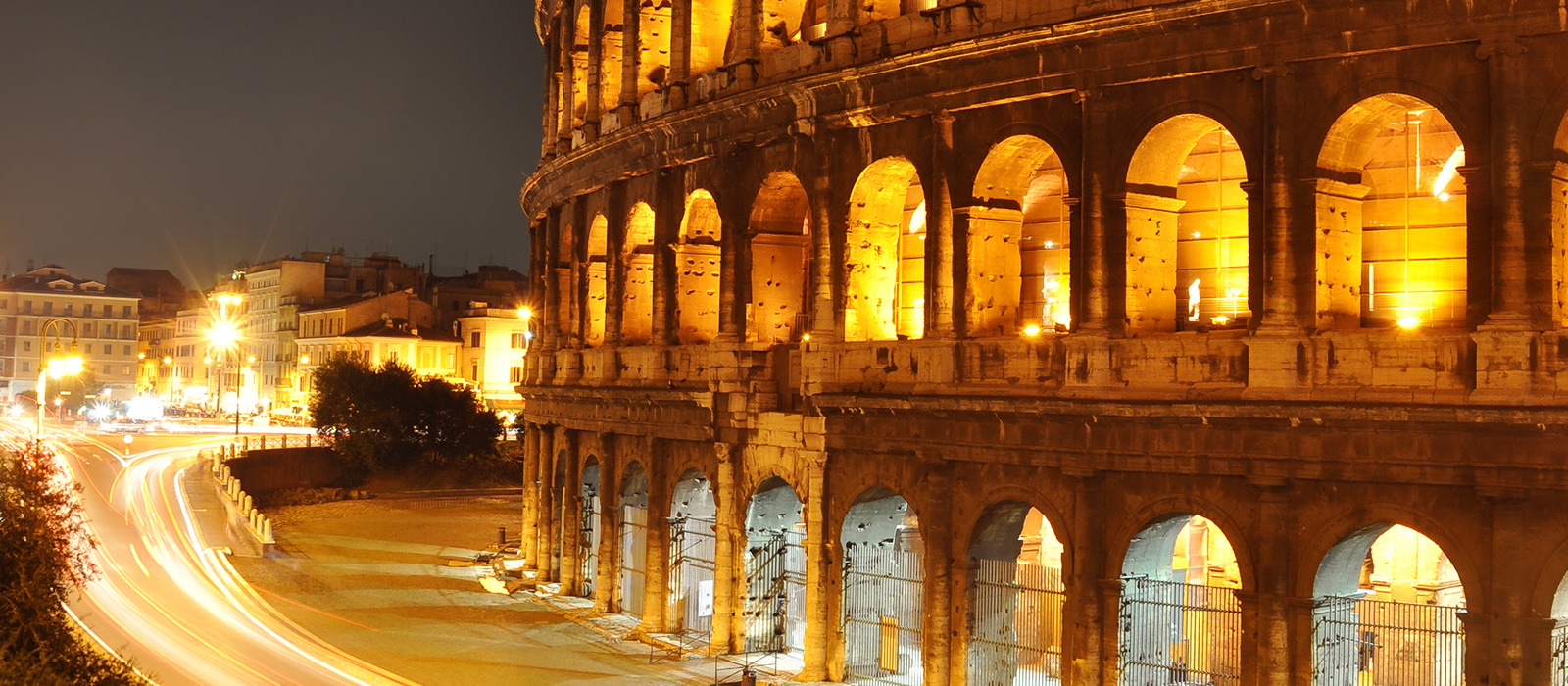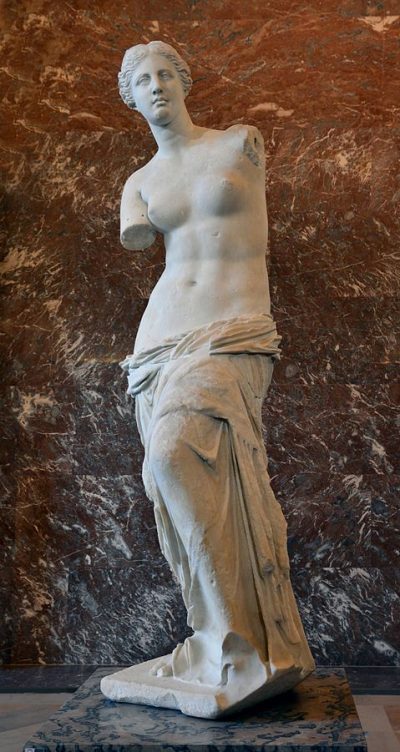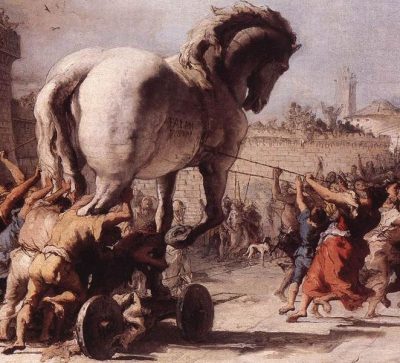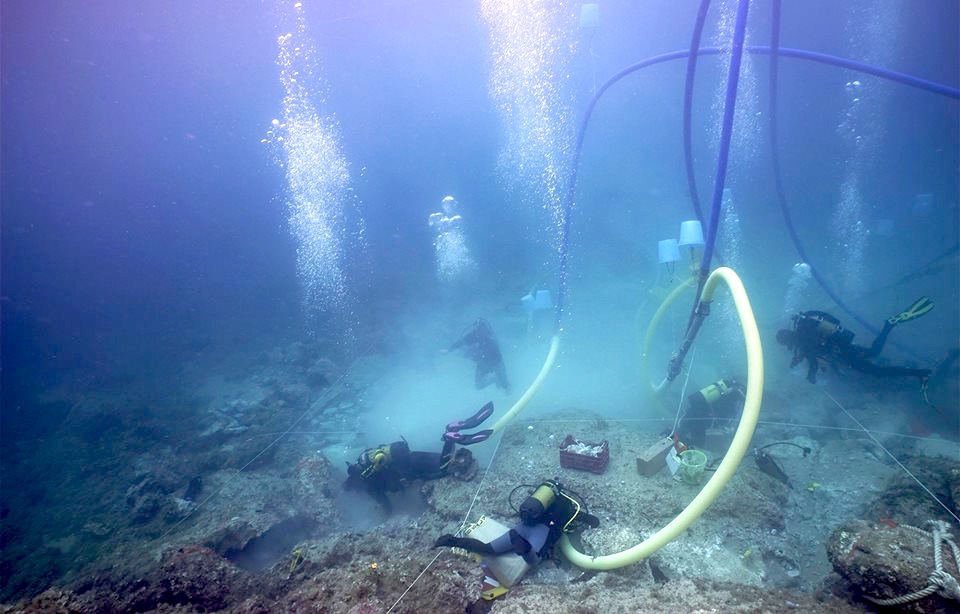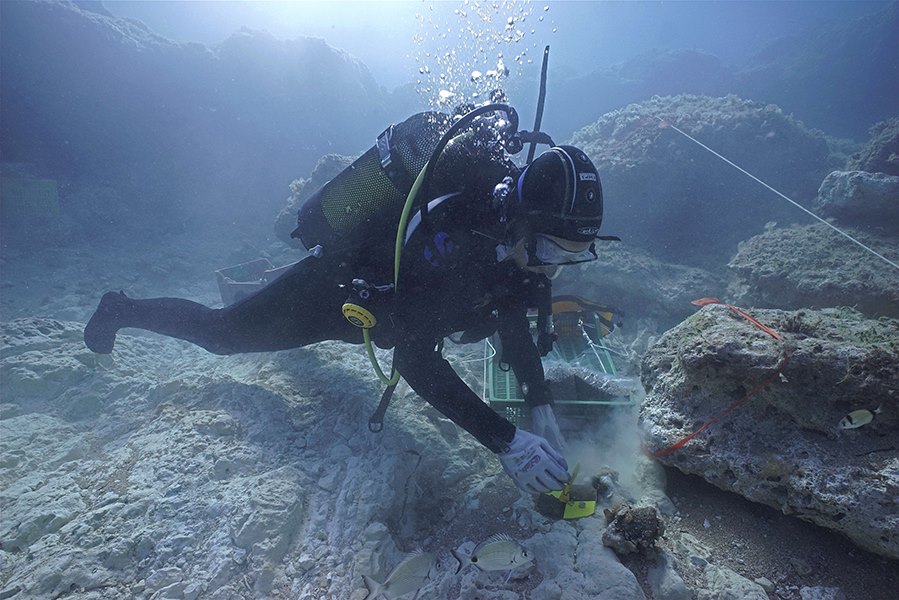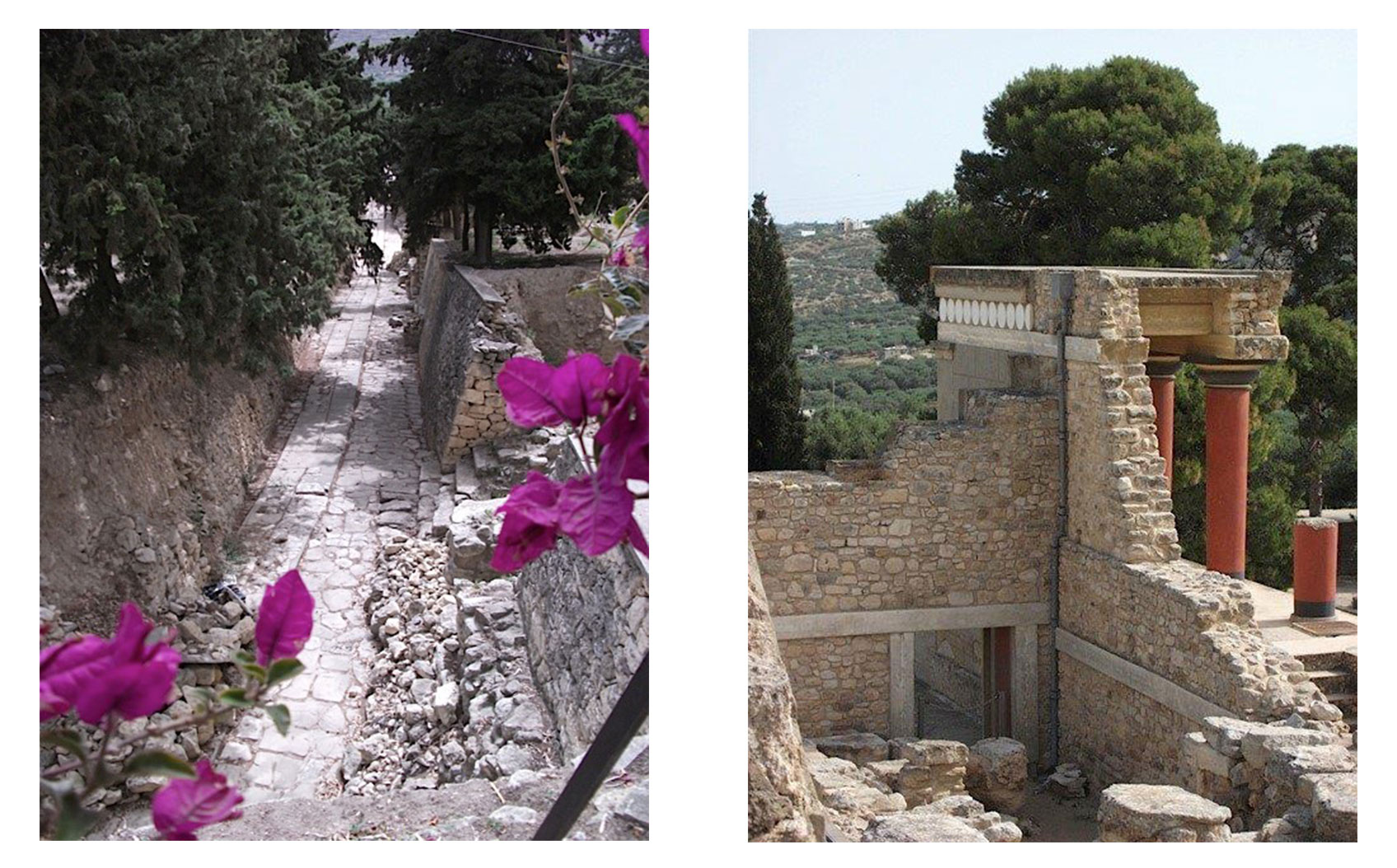Table of Contents
- The Passing of the Editorial Torch
- The Winges Gift
- The Venus de Milo Gift
- The 40th Anniversary Report
- The Lecture Series
- Sheri at Sicilian Marzamemi
- Book Reviews and Book Cases
- Joy’s Book Case
- Faculty News
- Upcoming Events
- Forthcoming in the next edition
- A Final Word of Thanks
Welcome
Dear Friends,
This 2017 edition of the Newsletter of Greek and Roman Studies begins with a message from Josh Beer:
As I sink into what I hope is a peaceful dotage it is with many thanks and great pleasure that I should like to introduce Professor Marianne Goodfellow as the new editor of the FGRS Newsletter. I can think of no one who has served the Greek and Roman Studies program at Carleton more loyally over many decades. Like me when I was editor, Marianne needs your support to get the newsletter ready for publication once or twice a year, so please do send in comments, suggestions, even short articles. Unlike me, however, Marianne is very sane, so you won’t have to tolerate any more madness on my part, that is unless Marianne should be foolish enough to ask me to write something before I leave planet earth. Always keep in mind my motto in life: “Be good but, if you can’t be good, read Aristophanes.” I particularly recommend his Knights, now that Donald Trump is the new president of the USA. — Josh
It is a daunting prospect for me to take on this new position, and though I have been, in one way or another, part of Carleton for “many decades,” Josh will always be a legend unto himself for all those who know him. I need only mention his dramatic reading of the first book of the Iliad, and his participation last spring in Shakespeare: A Celebration, to mark the 4th centenary of the bard’s death. Josh is now awaiting the publication in Mouseion of his article, “Tradition and Ambiguity: Heroic Action and Deceit in Lines 1-85 of Sophocles’ Electra.”
I do have some ideas of my own for this newsletter, but you, as readers, will notice very quickly that I will not be able to pepper my writing with those excellent mythological and literary allusions (or those more risqué references) that are so characteristic of Josh’s writing. I am, however, “foolish enough” to ask Josh to continue contributing to the newsletter, as you will read later on. I am also proposing that he begin what I will call “Beer’s Blog” to keep this newsletter on the cutting edge of social media.
The Winges Gift
My first task in this newsletter is to acknowledge the very thoughtful and generous gift given to FGRS last spring by Mr. Ken Winges and his wife, Ursula. Ken is an alumnus of Carleton as are his sons, Jeremy and Scott, both of whom were students in my first year seminar. In 2015 Scott graduated with an Honours BA in Greek and Roman Studies, and his father took to reading the newsletter just as he used to read his son’s textbooks. His interest in the Classics began in high school as he explains in his letter that I shall quote from so that you appreciate the sincerity of his donation:
“…approximately 50 years ago when you [Josh] were just starting your career at Carleton, I was just entering the school as an undergraduate. My plan was initially to go into the Classics department (what there was of one), but at the last moment was convinced by some colleagues that the only way to get a job and make some serious money was to go into Commerce. I did switch over from the Arts faculty to Commerce and have somewhat regretted that decision ever since. In fact, I never did become a ‘bean counter’ but ended up moving sideways into teaching and eventually the federal government as a systems analyst. I never lost my love of ancient history and Latin however. I caught the bug in high school (Lisgar Collegiate) where I took 5 years of Latin and where there was (hard to believe now) a Classics Department with at least 3 full time staff.
When my son Scott told me he was interested in pursing a study program in the Classics at Carleton, I at long last felt my early desire to go into the Classics was being fulfilled by him. I could achieve my classical dreams by living vicariously through him. I was delighted and encouraged him to follow his heart and his dreams and NOT make the same mistake I had.” — Ken Winges
Scott is now a graduate student in the MA Classics program at the University of Ottawa along with Bernardo Mingarelli and Travis Colbourne, two recent Carleton GRS students. Fellow students Matt Chandler and Ryland Patterson, both devoted to the languages, are also pursing a Master’s degree at Queen’s.
The Venus de Milo Gift
In a few month’s time, Paterson Hall will be graced with a replica of the famous Greek statue, the Venus de Milo, which is in the Louvre. The statue is a gift to Carleton University in celebration of Canada’s 150th Anniversary from a French and Canadian family in Ottawa through Maison France à Ottawa. This life-size replica, a little over 7 feet tall and weighting about 250 lbs., was made by the Ateliers de la Réunion des Musées Nationaux et du Grand Palais (formerly Ateliers du Louvre). The statue is made of resin and supposedly ages like a stone statue. It is valued at $12,000 Euro or about $17,000 Canadian.
The 40th Anniversary Report of the Classics Dept. at Carleton
As you are all aware, 2017 marks the 75th anniversary of the founding in 1942 of what became Carleton University. The university celebrated earlier milestones in various ways; for example, in 1982 all departments were required to submit a report to the Dean and President to mark the 40th anniversary. As chairman that year, Josh wrote a report on the Classics Department. While recently clearing out his files, he came across that report, typed on what is now an artifact, a relic of a bygone era – the typewriter. This is, as Ray Clark, noted “a valuable historical piece” which documents the perennial struggle of preserving the traditional elements of any Classics program involving the study of Greek and Latin. The report is presented here in its original charmingly “classical” appearance.
Read A brief account of Classics at Carleton (PDF).
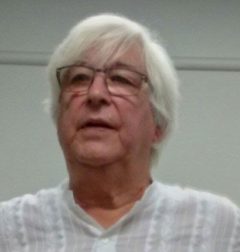
Professor Josh Beer
The Lecture Series
This is a new endeavour of the newsletter to highlight guest lectures that take place in our department. The first submission is the following review written by Prof. John Gahan:
Troy, Troy, Troy Again
Seats were at a premium in Carleton University’s Paterson Hall Thursday evening, November 3 [2016], for the annual lecture, co-sponsored by the Dean of the Faculty of Arts and Social Sciences[1] and the College of the Humanities, given this year by C. Brian Rose, the James B. Pritchard Professor of Archaeology at the University of Pennsylvania and Head of Post-Bronze Age Excavations at Troy. Professor Rose’s talk was entitled “Assessing the Evidence for the Trojan War: Recent Excavations at Troy.”
The lecture focused on the late Bronze Age materials associated with the legend of Troy. If in the course of his lecture Professor Rose seriously shook our trust in Homer and the Iliad, he did so with a smile on his face and a sense of humour that captivated all. When he was finished talking about the latest finds and what they mean, gone too was Helen, who seems merely to have stood for all the women abducted from east to west and vice-versa to work in the antique textile trade. A war in which Greeks fought Trojans? No, not really. Troy was not that powerful. The Greeks did engage in battles against the Hittites, with whom the Trojans were allied; these were likely the battles that became epitomized as Greece versus Troy in Homer. Finally, the Trojan Horse itself? Probably a siege engine of Homer’s own day which the poet conjured up as the equine that was key to the Greek victory.
The warmth of the applause at the end of Professor Rose’s interesting and informative lecture was testimony to the enthusiasm of his audience. After several meaningful questions and thoughtful responses, everyone adjourned to a reception in the speaker’s honour. May next year’s lecturer be as well received!
November was a busy month for guest lectures with another presentation on Homer by Prof. Serrati (U of O) and our own Susan Downie on the mysteries of the Delphic Oracle. Then in January Daryn Lehoux from Queen’s lectured on the famous Antikythera Mechanism, “the most complex technological device from antiquity.” This artifact found on a shipwreck site off the Greek coast at Antikythera in 1901 continues to fascinate as evidenced by the very large crowd at the Hellenic Community Center.
[1] Initiated by Dr. John Osborne, during his tenure as Dean (2005 – 2015).
Sheri at Sicilian Marzamemi
The Antikythera lecture underlines that ancient desire of people to seek treasures and explore beneath the sea, just as Herodotus described. One of our own students, Sheri Kapahnke, who graduates this spring, had that opportunity in the summer of 2016 and she describes the experience for us in words and pictures:
Marzamemi Maritime Heritage Project
In the Summer of 2016, I had the most incredible opportunity to be a part of an underwater excavation off the southern-most coast of Sicily. The site was the wrecked ship carrying elements to build a Late Antique church. The site of the approximately 1500-year-old wreck raises a number of exciting questions: what does a ship carrying tons of marble look like? Was a normal cargo ship commissioned for the shipment or did it have to be specially built or rebuilt as a marble carrier? Did the ship have a single marble cargo or multiple cargos traveling alongside the architectural elements? What was the ship’s origin and destination? Was this ship part of the Emperor Justinian’s building reform? What did shipping norms and church building norms look like at the brink of the decline of the Roman Empire? And how do we display artifacts from the site to the public?
Six days a week, we would descend approximately 8 meters to the site to see a sandy ocean floor surrounded by reef, and littered with marble column fragments and large boulders. It amazed me that we were able to get the team of over 20 excavators in the water everyday and we made an astounding amount of progress during our six weeks in Sicily. Each team member team worked underwater for 80 to 120 minutes a day moving through layers of rock and sand in designated excavation units, bagging, tagging and flagging pieces of grey marble, green breccia, charcoal, metal concretions and pot sherds. The marine life on the site was plentiful: some dangerous, some curious, but my favourite were the small goat fish who would work beside you sifting through the sand with their whiskers looking for worms. It felt as if they were uncovering mysteries alongside me. The act of waving a small layer of sand into the dredge to uncover a brilliant green marble or clean grey marble surface, or large pottery shard was always a thrilling moment. My mind hoped fervently every time I found something new: Will the surface be worked? Will the Emperor Justinian’s face be engraved on the other side? Will this new find help to answer our many questions?
This experience had personal resonance for me as well. Like many children, I was fascinated by rocks when I was young. I spent hours at my cottage, in the lake, picking up rocks at the bottom of the sandy floor and collecting the colourful patterned objects in mounds. Each day at Marzamemi, as I dived down to the bottom of the Mediterranean to record and raise interesting rocks as an archaeologist, I couldn’t help but think how amused my family would be to see me now, and how ecstatic my childhood self would be with the task.
Every artifact, small or large became an important clue to the meaning of the site. Toward the end of the season our conservation lab at Rudinì, a restored winery that now operates as a museum, became a very exciting atmosphere, almost equal to working in the water. We learned from experts who studied the geological material, the ceramics, and techniques of 3D scanning. Soon enough, it became common for the students to split off into their particular specializations; small groups buzzed around the museum registering, photographing and cataloguing artifacts, doing fabric analysis of the ceramics, drawing and cleaning ceramics, studying metal concretions and marble, doing database entry and object scanning.
The incredible experience of working on an archaeological dig in Italy was topped off with incomparable Sicilian meals including the best eggplant I’ve ever had, lots of pasta, pizza, figs and cannoli. We worked hard during the week, but every Sunday, we would relax on the beach or venture to beautiful nearby places such as Syracuse, Agrigento, Ragusa and Noto. It was the perfect summer experience.
The Marzamemi Maritime Heritage Project is directed by Justin Leidwanger at Stanford University and Sebastiano Tusa of the Soprintendenze del Mare in Sicily. I participated in the excavation as a student in Brock University’s Archaeological Practicum organized by Elizabeth Greene. More information, images and student experiences can be found through the Marzamemi Maritime Heritage Project’s website and Facebook page. (Click on gallery to expand photos).
Book Reviews and Book Cases
There are many wonderful books that have been written about the Classical world, Antiquity, the Greeks and Romans, not textbooks but travel literature, biography, autobiography, and historical fiction. These are the sorts of books I read and I would like to inaugurate a place in this newsletter where readers may find books of interest and make suggestions to add to the list.
My own list was begun by my dear friend, Joy Barrie, a Carleton Classics alumna who wrote a Master’s thesis on depictions of the horse, specifically the Akhal-Teke breed, in Greek vase painting. The first book she gave to me was The Villa Ariadne, nostalgic and tragic, about the island of Crete. Knowing that Prof. George Harrison spends much time there, I asked him if he would begin the series with a review and he has obliged with three books about the island which link the ancient with the more recent past:
The Cretan Collection
- Powell, Dilys 1999 (re-issue). The Villa Ariadne. Athens: Efstathiadis.
- Moss, W. Stanley 1952. Ill Met by Moonlight. London: Harray &co.
- Psychoundakis, George 1998 (re-issue). The Cretan Runner. Baltimore: Penguin.
It will perhaps not be the popular view with this audience, but it has the advantage of being the truth.
Visiting my apartment and looking at the books on my desk, my land-lord in Athens once asked me if a fire broke out and I could save either Homer or the Eratokritos (a crusader epic set in Greece), which one would it be? Without hesitation I chose Cornaros’ Eratokritos because his epic embraced all that was best in Homer; the reverse is not possible. If done right, each and every object of antiquity has a double-reference: my memory of the Parthenon is of the monument itself but also as strongly of the moment and friends I shared it with when I first saw it. One is not complete without the other, or, at the least, is poorer.
It is in that spirit I offer three books, all short and engaging reads in which the focus is largely Crete during the second world war but the persistent echo is of the ancient landscape its horrors violated. Dilys Powell worked briefly at Knossos in Crete before embarking on a career in radio and print, and had famously been ‘rusticated’ from Somerville (Oxford), that is, temporarily expelled for unlady-like behavior. Villa Ariadne is the dig house at Knossos where I stayed when I worked there and it was built by Evans for his excavation. His presence is still palpable and Powell’s book is as much about that inheritance and stewardship as it is about the excavation of the site associated with Theseus and the Minotaur.
The poet Byron famously died in Greece (1824) ensuring English participation in the liberation of Greece. Several archaeologists died in the defense of Crete (Pendlebury was executed in 1941 by the Germans at Chania) and numerous archaeologists fought in the Greek resistance, such as Dunbabin and Fermor, as also the musician Donald Swan. Ill Met by Moonlight is the story of British archaeologists who helped in the kidnapping of the German general in charge of Crete and their daring crossing of the mountains in the pitch dark to bring him to a submarine that took him to British held Alexandria. The Cretan Runner is the story of a young Greek who ran between contingents of the Cretan resistance, again most with archaeologists, who chose to stay and fight rather than be evacuated. Some chapters intersect with Ill Met by Moonlight.
All of the books are set in the twentieth century but all are essential reading for archaeologists since the events and people live in common lore in Crete — a villager might not know the name of the archaeologists working in the next village but they will certainly know something about Pendlebury, Fermor, Dunbabin, even if it is a ‘remembered truth’ and not a real one. By tradition, when we first land in Crete in the summer, if in Herakleion, I visit the grave of the Nobel laureate novelist and playwright, Kazantzakis, or if in Chania, we visit the grave of Pendlebury. To paraphrase another Nobel laureate, Faulkner — ‘the past is not dead; it is not even past’. That applies as much to the recent past as to antiquity.

Pendlebury Pendlebury Archive, British School at Athens.jpg
Joy’s Book Case
As an addendum to George’s review and to get the list underway:
- Sir Arthur Evans and Minoan Crete. Creating the Vision of Knossos by Nanno Marinatos, 2015 (a biography of Evans that includes previously unpublished letters between Evans and Spyridon Marinatos, Nanno’s father. She lectured at Carleton in 2013.)
- Nefertiti Lived Here by Mary Chubb, 1954 (As a young secretary, Mary accompanied Pendlebury and other archaeologists to Tell el Amarna in Egypt.)
The list will be very eclectic as these next two books, which I recently read and enjoyed immensely, prove:
- A Traveller on Horseback. In Eastern Turkey and Iran by Christina Dodwell ,1989
- Under Another Sky. Journeys in Roman Britain by Charlotte Higgins, 2010
Please send titles of books and/or reviews that can be added to Marianne.Goodfellow@carleton.ca
Faculty News
In addition to news at the beginning of this newsletter of Josh’s dramatic readings and publication:
Dr. Shane Hawkins is now the Director of the College of the Humanities but he has been very busy of late with conferences and publications. He hosted a conference on Digital Humanities in May with Richard Mann (Religion). Then he gave a paper on Hipponax at Oxford University in June that should be coming out in a volume with Cambridge, and a paper on Leibniz as linguist at Carleton in November. Shane will present a paper at the CAC in St. John’s in May on poetic initiation, and one on Hesiod in Louvain-la-Neuve, Belgium in October. His paper on Archilochus is coming out later this year in the journal Philologus.
Dr. Laura Banducci was awarded in 2016 a SSHRC Insight Development Grant for a project entitled, “Repair, consume, discard: Quality and value in Roman ceramics.” She was recently awarded a Loeb Classical Library Foundation Fellowship for the Gabii Finds Research Group, which she directs, for the study and publication of the artefacts excavated from the site of Gabii in Italy. Laura has been working on this site since 2009. She was also named an Archaeological Institute of America National Lecturer and will give the annual Oliver Lecture at the Edmonton Chapter of the AIA this March.
Dr. Ibrahim Noureddine (the University of Granada, Spain) has been appointed an Adjunct Research Professor in the College. He is a professional archaeologist who works both on land and underwater in the Middle East and Mediterranean, most recently at the Temple of Tutmose III in Egypt and along the coast of Lebanon at Tyre. He also works as a consultant archaeologist in Ontario and British Columbia. Dr. Noureddine is the CEO and founder of CARO, the Canadian Archaeological Research Organization.
Upcoming Events
The Carleton Classics Society will be hosting a launch for our annual undergraduate journal, Corvus, towards the end of the semester and a notice will be sent out. Come listen to the authors give presentations on their papers. There will be a reception afterwards. This will be the sixth year of the publication of Corvus.
Forthcoming in the Next Edition
As editor, I welcome submissions and suggestions for content for the next Newsletter that I hope to put together in the fall. Thus far, in addition to receiving suggestions for Joy’s Bookcase, I have commissioned the following articles:
- Walking the Via Egnatia with Walter
- A student’s first glimpse of ancient Rome
- Beer’s Blog
Please write to me at Marianne.Goodfellow@carleton.ca .
A Final Word of Thanks.
I would like to acknowledge the help of Josh, Sheri, George, and John who have kindly contributed to this edition of the Newsletter. But it would not appear in this format, so nicely put together and arranged with pictures and links and special details without the computer expertise and advice of Andrea McIntyre and Patricia Saravesi to whom I am very grateful.
The Very Best,
Marianne
